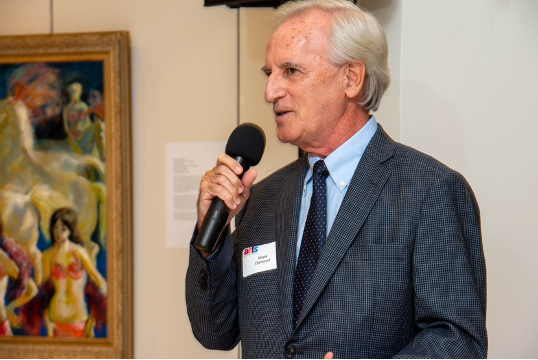What Does a Curator Do?
An interview with Mark Ormond, curator for the Arts Advocates collection of paintings and sculptures. With over 25 years of experience in the art world, he has organized dozens of museum exhibitions, and authored, edited, and contributed to numerous brochures, catalogs, and publications on artists. During his ten-year association with the Ringling Museum of Art in Sarasota, he was appointed senior curator & deputy director for collections and programs. Mark became the first curator and then was appointed director of the Center for the Fine Arts (now the Miami Art Museum).
Q: What does the term "curator" mean? What are the responsibilities of a curator of art?
MO: The denotation of the word curator is someone who is the caretaker or custodian of a collection of objects. The curatorial responsibility usually includes being responsible for the exhibition of objects in the collection.
A curator researches evaluates, compares, and studies works of art. A curator may be hired by a museum, college, corporation, private individual, or other organization with a collection. A curator monitors the safekeeping of the artwork, the display of the artwork and its condition, and the accuracy of the database about the objects in the collection.
A curator may write about an artist or a specific work of art or a collection of works by one artist or a group of artists. If the collection has an acquisition budget or accepts donations the curator will make recommendations for purchase or acquisition. A curator also organizes exhibitions of art.
Q: How does someone become a curator — what is the typical career path?
MO: One can go to university and study art history and know-how to make art and have an advanced degree and most curators do. However, the only way to becoming a good curator is to have spent your life being in the physical presence of quality objects.
The most important experience someone must have to be a good curator of any period of art or artifacts is actually having observed and studied objects first-hand over many years. A curator learns by informed comparison and that means having seen the best examples and knowing how to recall that first experience with a new experience with a new similar object. That new object may be by the same artist or the same time period or from the same location as the object the curator may have seen yesterday, a year ago or ten years ago.
It is best that the curator has experience in the subject area of the collection. The person should be well-read in the subject area and be able to research and write about the work in the collection. A network of other individuals in the collection area is also useful.
Q: Are there different kinds of curators who work in different fields or mediums? Do their roles differ?
MO: Every collection area has curators with different specific knowledge about those collection areas. There are curators of historical artifacts who work in history museums. There are curators who are experts in science who work in science museums. There are curators who are experts on animals who work in zoos. Basically, their jobs are the same. However, a curator in a zoo is responsible for living creatures and so what the animal eats and its habitat are of primary concern.
Q: As curator for Arts Advocates, what are your responsibilities? What do you do for the organization?
MO: My responsibilities for the Arts Advocates collection is the same as what is described above. I maintain a database of information about the objects in the collection that I update whenever I discover new information. I make recommendations for the new acquisitions either by purchase or donation. I research and write about objects in the collection and I organize their movement, exhibition and display.
